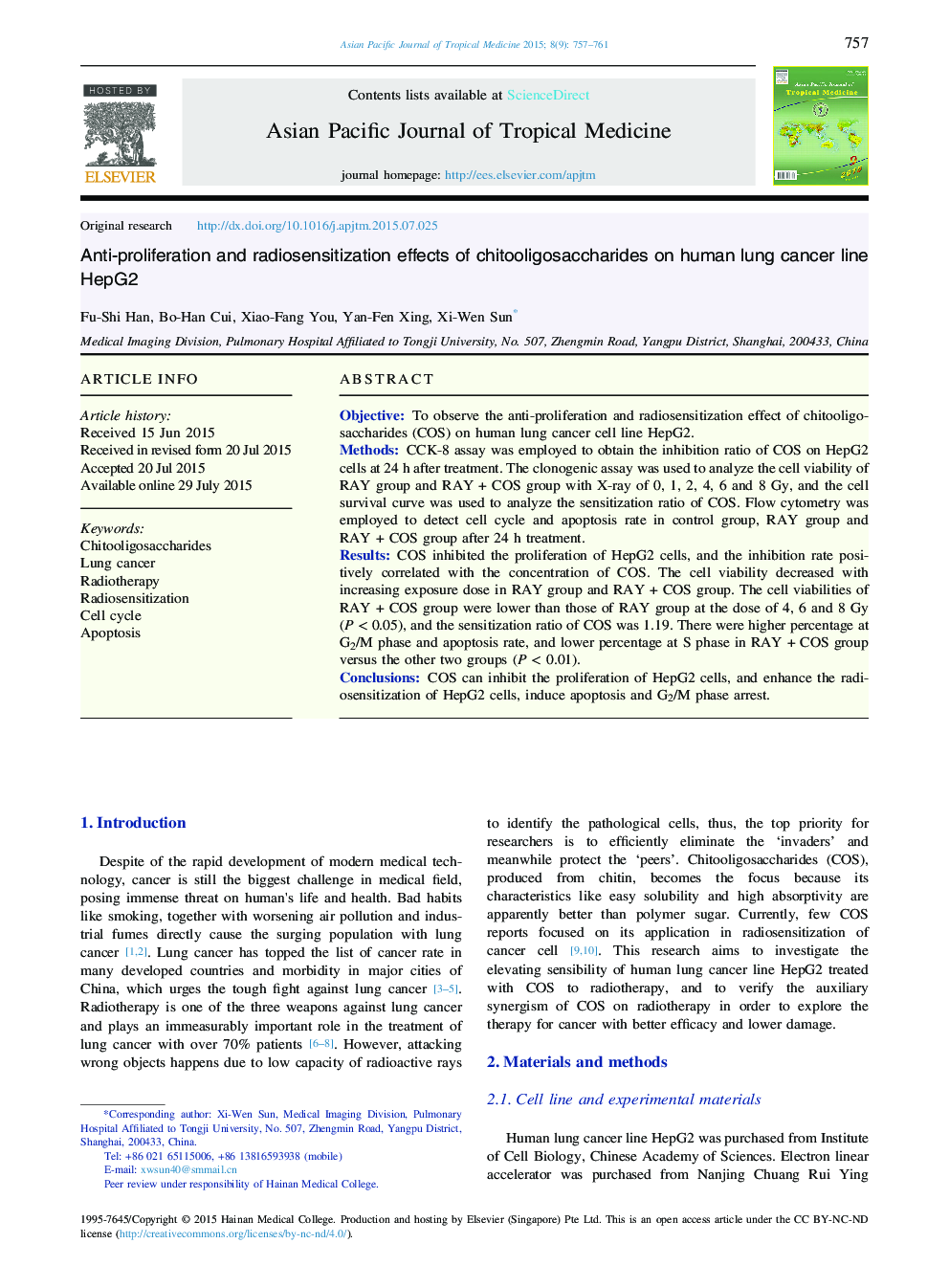| Article ID | Journal | Published Year | Pages | File Type |
|---|---|---|---|---|
| 3455496 | Asian Pacific Journal of Tropical Medicine | 2015 | 5 Pages |
ObjectiveTo observe the anti-proliferation and radiosensitization effect of chitooligosaccharides (COS) on human lung cancer cell line HepG2.MethodsCCK-8 assay was employed to obtain the inhibition ratio of COS on HepG2 cells at 24 h after treatment. The clonogenic assay was used to analyze the cell viability of RAY group and RAY + COS group with X-ray of 0, 1, 2, 4, 6 and 8 Gy, and the cell survival curve was used to analyze the sensitization ratio of COS. Flow cytometry was employed to detect cell cycle and apoptosis rate in control group, RAY group and RAY + COS group after 24 h treatment.ResultsCOS inhibited the proliferation of HepG2 cells, and the inhibition rate positively correlated with the concentration of COS. The cell viability decreased with increasing exposure dose in RAY group and RAY + COS group. The cell viabilities of RAY + COS group were lower than those of RAY group at the dose of 4, 6 and 8 Gy (P < 0.05), and the sensitization ratio of COS was 1.19. There were higher percentage at G2/M phase and apoptosis rate, and lower percentage at S phase in RAY + COS group versus the other two groups (P < 0.01).ConclusionsCOS can inhibit the proliferation of HepG2 cells, and enhance the radiosensitization of HepG2 cells, induce apoptosis and G2/M phase arrest.
